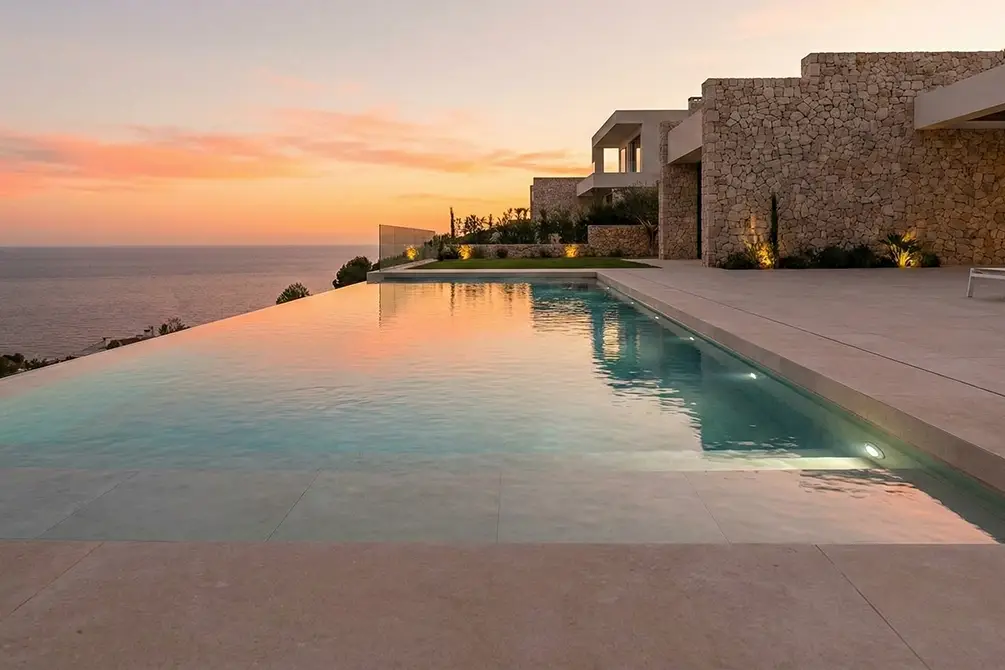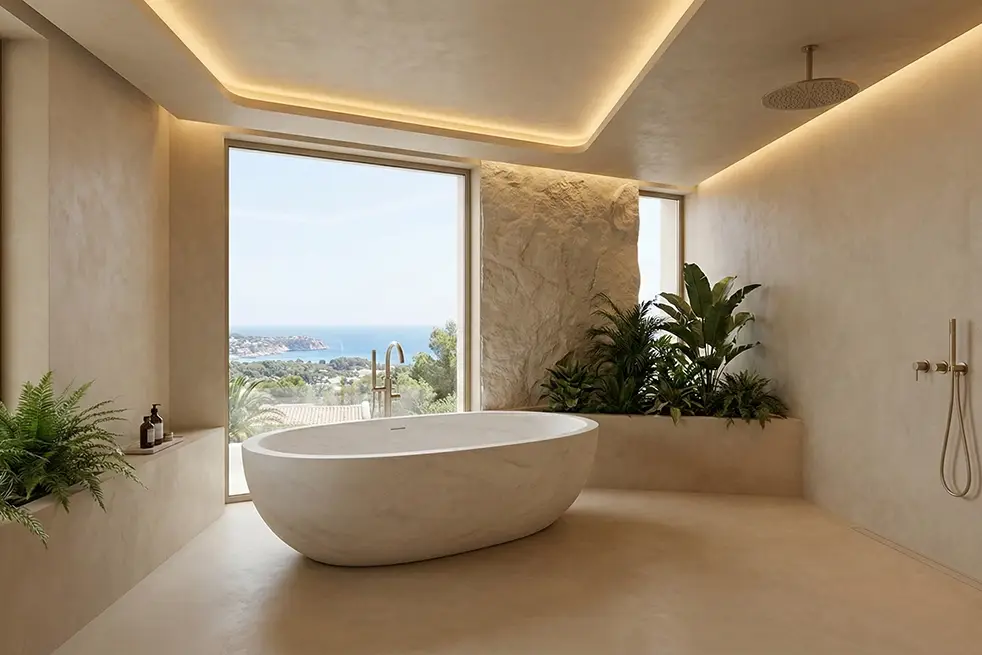Building a home by the sea is a dream for many. The breeze, the light, the landscape… everything invites visions of a peaceful, sunlit life in harmony with nature. However, turning that dream into reality requires more than just a good plot and an attractive idea—it means anticipating and addressing a series of common challenges that arise when building a house on the coast.
At our architecture studio, we’ve guided many clients through this type of project. And if there’s one thing we’ve learned, it’s that the most costly mistakes are rarely visible—they’re usually technical: damp, condensation, water ingress, material deterioration, or poor insulation. That’s why today we’re sharing a guide to the most frequent issues and practical solutions for building with intelligence, durability, and confidence.
Ambient humidity: The silent enemy
One of the defining features of coastal areas is the high level of relative humidity in the air. In humid climates, such as that of the Costa Blanca, excess moisture can seep into porous materials, damage interior finishes, and encourage the growth of mould.
How can it be avoided?
The key lies in choosing materials with low absorption and good breathability. Installing vapour barriers in roofs and walls, incorporating natural cross ventilation, and using controlled air renewal systems help maintain the home’s hygrothermal balance. In addition, applying waterproof exterior coatings and using ventilated façade systems can make a significant difference.
Interior condensation: When moisture comes from within
Not all excess moisture comes from outside. In a poorly ventilated or inadequately insulated home, steam generated by showers, cooking, and daily activities can condense into droplets on cold surfaces such as windows, walls, and ceilings.
How can it be avoided?
Ensuring proper ventilation—whether natural cross ventilation or mechanical systems—is essential. Effective thermal insulation also prevents the formation of thermal bridges, which are often the source of condensation. Choosing window frames with thermal break and double or triple glazing helps to maintain a stable indoor temperature.
Rainwater or saltwater ingress
Coastal climates bring more than just humidity—they also expose buildings to heavy rain, strong winds, and, in many cases, the corrosive effects of the sea. Without proper waterproofing, water ingress can cause serious structural damage in a short time.
How can it be avoided?
Before building, it’s crucial to study the plot’s topography and how water behaves on the site. From this, roof slopes, drainage systems, concealed gutters, and technical solutions such as waterproof membranes on roofs and terraces can be planned. In addition, using water-repellent mortars on plinths or lower walls can offer effective protection for the most vulnerable areas.
Poor thermal insulation: Comfort and energy efficiency at risk
Many coastal homes are built with the assumption that “extensive insulation isn’t necessary” due to the mild climate. However, this is one of the most common mistakes when building a house by the sea. Inadequate insulation leads to overheating in summer, cold interiors in winter, and a significant increase in energy consumption.
How can it be avoided?
Insulation should never be overlooked, even in warmer regions. Incorporating continuous thermal insulation in façades, roofs, and floors—alongside controlling air infiltration and improving the solar performance of the building envelope—helps maintain a stable indoor temperature without over-reliance on mechanical systems.
Corrosion and material deterioration due to salt exposure
Living close to the sea means greater exposure to salt in the air, which can deteriorate metals, paints, fittings, and finishes. Railings, external joinery, and even electrical systems can suffer damage if unsuitable materials are used.
How can it be avoided?
Choose corrosion-resistant materials such as marine-grade stainless steel (AISI 316), anodised aluminium, or specially treated wood and metal finishes. It’s also important to protect fixings, screws, and anchor systems, and to carry out regular maintenance to extend the lifespan of each element.
Foundation issues due to unstable or damp ground
Coastal soils are often sandy, damp, or unstable—factors that directly influence the choice of foundation type. If miscalculated, this can lead to differential settlement, structural cracks, and displacement.
How can it be avoided?
A preliminary geotechnical study is essential. Only with a full understanding of the ground conditions can the appropriate solution be selected—whether continuous footings, reinforced slabs, piles, or mixed systems. At our architecture studio, we never begin a build without a complete terrain assessment, no matter how appealing the plot may seem.
Extreme sun exposure: Interior comfort and exterior deterioration
In coastal areas, solar radiation is intense for much of the year. This not only impacts interior temperatures but also affects the longevity of exterior finishes, awnings, paints, and roofing.
How can it be avoided?
The design should make the most of natural light while preventing harsh sunlight from directly hitting façades. Eaves, pergolas, louvres, and adjustable shutters can all help regulate sunlight depending on the season. Choosing light-coloured materials and finishes that are resistant to UV radiation also helps preserve the building’s appearance and performance over time.
Building on the coast with care and experience
Building a home by the sea is an investment in quality of life. But to ensure that experience doesn’t turn into a series of repairs, maintenance issues, and unpleasant surprises, it’s essential to plan properly from the outset.
At La Quinta Fachada Arquitectura, we design each coastal home with the environment, climate, and real use of the space in mind. We anticipate common problems with long-lasting construction solutions, suitable materials, and a technical approach grounded in experience.
Because a home by the sea should bring peace of mind—not worries.
Thinking of building your home on the coast?
We’d be delighted to help bring your vision to life, anticipating every detail so you can enjoy the process with confidence and peace of mind. From concept to final finish, our team is here to support you with professionalism, dedication, and a personal touch




